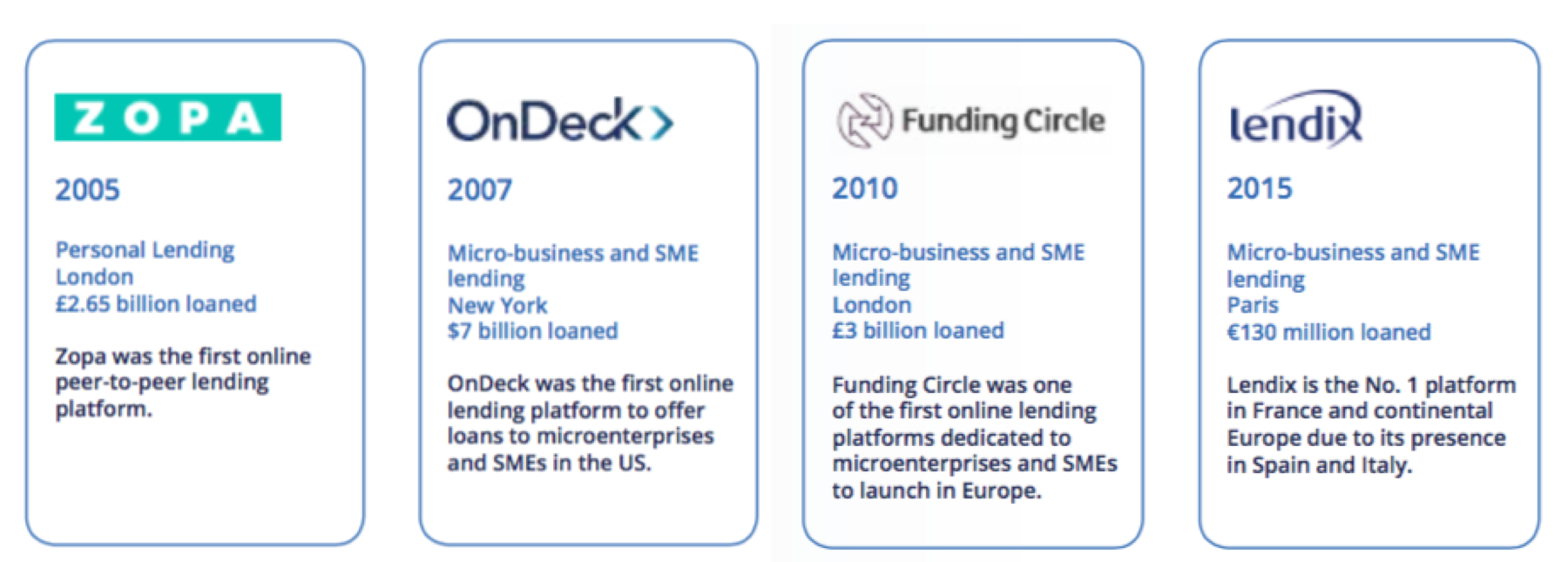Origins
“Fintech” is a portmanteau which regularly makes the news. It describes start-ups which use new digital technologies to launch innovative financial services with the intention of blowing open the world of traditional finance. Their turnover may not (yet) carry much weight compared to the turnover of the traditional big players, but they are making spectacular progress and their growth potential is considerable. Since 2008, investments in the sector have exploded, reaching a peak of $23 billion globally in 2016 according to Accenture.
This phenomenon also strongly affects Europe where, since 2015, around a hundred new Fintechs are financed each quarter, according to KPMG’s Pulse Fintech. Europe is not just following the United States, but has been the source of many innovations that have then taken the world by storm, such as TransferWise in currency transfers or Zopa, the pioneer of personal finance lending platforms. These two companies are from the United Kingdom, the country driving the phenomenon thanks to the open-mindedness of its regulator. Now, the spotlight is also on other European countries: France, Germany, the Netherlands, Spain and Italy.
An explosion of different Fintech solutions for SMEs
By focusing on a specific part of the complex financial value chain of SMEs, Fintechs offer simpler more efficient and more economical solutions. Unburdened by some of the complexities of their administrative management, SME managers can, with Fintech support, concentrate their resources on developing their activity and their customers.
The scope of Fintech activity is very broad and constantly developing. Regarding services to SMEs, their activities cover 9 major categories grouped around the issue of flow financing and flow management on the one hand and operational excellence on the other.
Where do the online lending platforms come from?
Zopa, the first online lending platform launched in 2005 in the United Kingdom, allowed individuals to lend to other individuals. Two years later, the online lending platform OnDeck was the first to offer loans to small and medium-sized enterprises (SMEs) in the US.
After seeing rapid growth in the United Kingdom and the United States, lending platforms spread across Europe. In France, the government published an order in May 2014 ending the “banking monopoly” on business loans and allowing the creation of online lending platforms. A decree was then published in October 2014 to oversee the development of these platforms. It sets a maximum of €2000 (initially €1000) for the amount that an individual can lend to a business project and €1,000,000 as the maximum amount that a company can borrow from individuals via a platform.
In other European countries, regulations have also evolved in favour of the development of lending platforms. In Spain, for example, the government voted in April 2015 to regulate crowd-funding activities for SMEs. In passing this law, Spain became one of the most advanced European countries in setting up a clear and favourable regulatory framework for the development of this new method of financing.
The 4 pioneers of online lending
